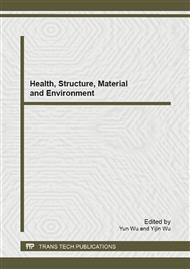p.708
p.713
p.717
p.722
p.729
p.736
p.743
p.749
p.753
Solid Distribution in Clarifier Blanket: Numerical Modeling and Experimental Measurement
Abstract:
In this study, one-dimensional model for the solid distribution of flocculated suspensions in clarifier blanket is investigated by considering both up-flow velocity and hydrodynamic dispersion effects. The solution of the model equation predicts that the solid concentration will decrease remarkably along with the height of the blanket. And according to the characters of flocs, operational conditions such as up-flow flux, flocculent dosage and stirring speed affect the variation of SS. The following lab-scale experimental works with synthetic ferric-sludge flocculated with PAM confirm the numerical predictions. SS in various blanket heights under different PAM dosage was analyzed to recover the relationship between SS distribution and flocculant dosage. The results show that higher dosage of PAM will cause more dramatically SS variation due to the larger diameter of the agglomerated particles. The experiment also shows that up-flow flux has slight effect on the solid distribution inside the flocs blanket. Moreover, various stirring speeds within fitful range has no significant effect on the blanket. But too fast stirring will cause SS increasing at the top of the blanket due to the breakage of flocs.
Info:
Periodical:
Pages:
729-735
Citation:
Online since:
February 2013
Authors:
Keywords:
Price:
Сopyright:
© 2013 Trans Tech Publications Ltd. All Rights Reserved
Share:
Citation:


